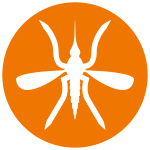Get to know us
About One Health PACT



The Netherlands is particularly vulnerable to outbreaks of viral diseases transmitted by mosquitoes due to its water-dominated landscape, dense humans and livestock population and the expected establishment of new mosquito species such as Aedes albopictus. Separated and reaction-based research efforts into the numerous factors interplaying in the emergence of viral outbreaks, however results in disconnected research findings and critical factors unstudied. The One Health PACT is a research collaboration of experts in a wide variety of fields relevant for infectious disease outbreaks, ranging from ecological and climate modelling to medical entomology, virology and public health. Together we take a proactive approach in the preparation for future outbreaks of mosquito-borne diseases in the Netherlands (see section on Pillars for detailed approach). The One Health PACT includes research projects for 26 PhD students and one post-doctoral researcher, who are based in five universities in the Netherlands and closely collaborate with national institutions.
The pillars of the One Health PACT
Pillar A: Ecosystem mapping
Pillar A focuses on generating data on density and movement of animal hosts and mosquito vectors, as well as the arboviruses they carry. Research methods are harmonized and interconnected to create a unique surveillance network spanning across birds, bats, rodents, large wild mammals, livestock, humans and mosquitoes throughout the Netherlands. The researchers carry out field studies such as mosquito trapping and wild bird ringing and sampling, and integrate the data from these efforts with data from citizen science projects. With their work, researchers from Pillar A provide critical baseline data for Pillar B.
Pillar B: Forecasting and early detection
Pillar B is responsible for model development. It aims to map at high-resolution the complex interplay between factors that drive arbovirus introduction, circulation and expansion. Methods and practical tools are developed for early warning, which aim to quantify and predict when the critical emergence threshold will be reached for vector borne diseases. Four different scenarios that could lead to disease emergence are analysed: (1) changes in climate, (2) changes in water management, (3) changes in farming practices, and (4) changes in importation risk of vectors and viruses. Additionally, critical knowledge gaps for the change scenarios are addressed through targeted experimental studies of vector immunity, vector competence and vector population parameters in global change scenarios.
Pillar C: Impact and severity assessment
Pillar C addresses knowledge gaps that are critically needed for risk assessment of mosquito-borne viral disease outbreaks. Through in vitro and in vivo experiments in mosquitoes and hosts, as well as through serological surveillance studies, it aims to characterise arbovirus infections at each step of the infection cycle in hosts and vectors. Host range, vector competence, pathogenicity of arboviruses in animal and human hosts, and cross-reactivity between arbovirus specific antibodies are investigated.
Pillar D: Interventions
Pillar D receives input from all other pillars and uses this information to create practical tools to intervene in mosquito-borne disease outbreaks. Included are the development of tools and approaches for viral surveillance before and during outbreaks, the development of vaccines, and interventions based on immune modulation and vector targeting. Critically, we will translate the research in the project to relevant Public Health actions for the Netherlands, including risk assessment and protocols during outbreaks.